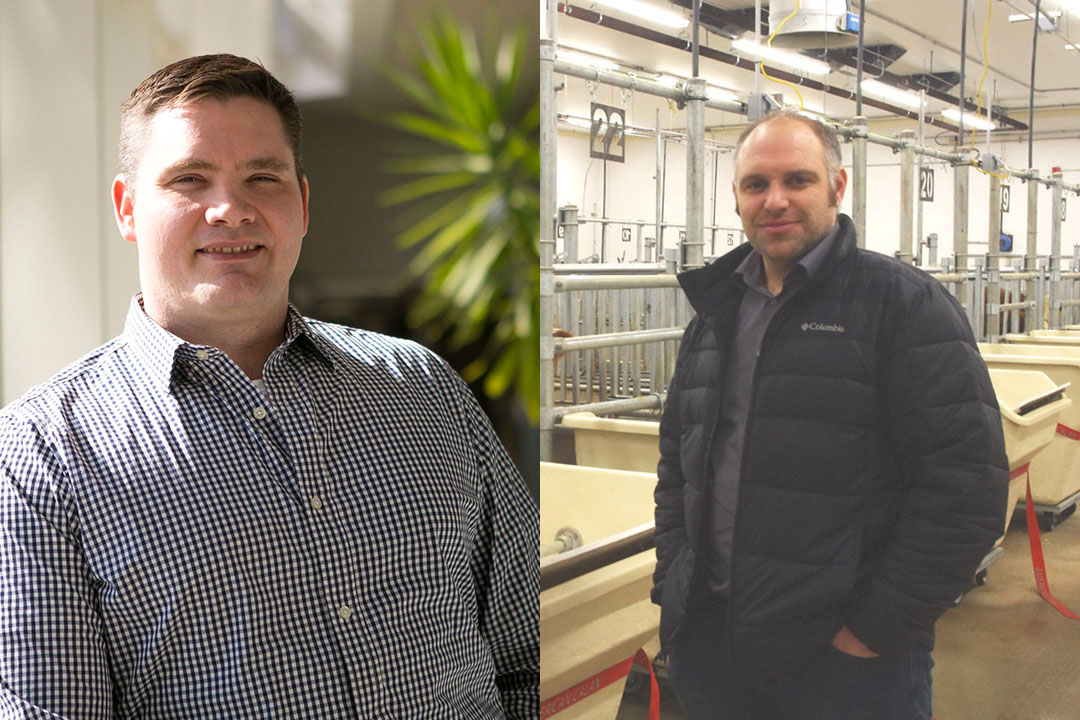
USask research aims to help cows, forage plants deal with stresses
SASKATOON – Two University of Saskatchewan (USask) researchers have been awarded $322,000 in total by a federal agency for developing drought and salinity-tolerant forage crops, and reducing heat stress in dairy cattle.
The funding is from the Natural Sciences and Engineering Research Council’s (NSERC) Alliance Grants program, which encourages university researchers and partner organizations to collaborate in generating new knowledge and accelerating the adoption of research findings to benefit Canada.
Fungi and forages symbiotic partners in battling salinity stress
Dr. Jon Bennett (PhD), assistant professor in USask’s College of Agriculture and Bioresources (AgBio), was awarded $191,000 over three years to sustainably increase the productivity and salinity-tolerance of forage crops typically grown on marginal lands in Western Canada.
Forages comprise most of the diet of cows and are critically important to Canada’s cattle industry.
Bennett’s team aims to reduce the need for inputs and increase forage production by optimizing plant interactions with symbiotic arbuscular mycorrhizal fungi (AMF) that colonize plant roots. AMF can increase plant tolerance to low water, salinity, and pathogen resistance, and in turn thrive on plant-derived carbon.
“Our ultimate goal is to determine if we can develop forage varieties that are more broadly responsive to AMF, and develop AMF that benefit those forages,” Bennett said.
To accomplish the goal, researchers will measure a suite of variables linked with plant-AMF interactions across multiple populations for two important forage legumes, alfalfa and sainfoin, and then study if these traits influence plant growth under different stresses.
Researchers sampled soils from saline and non-saline native grasslands across Alberta and Saskatchewan to culture AMF from these environments. They are using these cultures to predict which other locations have AMF that increase plant growth and salinity tolerance in three species (forage barley, alfalfa, and tall wheatgrass).
Industry partners in the project are: Alberta Beef Producers, $77,910 in cash and in-kind support; Saskatchewan Cattlemen’s Association, $27,300 in cash and in-kind support; and in-kind support from Agriculture and Agri-Food Canada’s research centres in Swift Current ($5,500) and Lethbridge ($5,000).
Helping cows munch their way through summer heat
Dr. Gregory Penner (PhD), AgBio professor and USask Centennial Enhancement Chair in Ruminant Nutritional Physiology, was awarded $131,000 over two years to investigate dietary strategies to help dairy cattle deal with summer heat.
“We are specifically focusing on whether cations (sodium and potassium) or dietary buffers (carbonates) help to mitigate heat stress,” Penner said.
At USask’s Rayner Dairy and Research Facility, cows will be fed a specific dietary supplement. Researchers will study variables such as animals’ core body temperature, feed intake, milk production, and indicators for inflammation, to see if the feed strategies help mitigate heat stress.
Cattle respond to heat stress with sweating and open-mouth panting—using respiration to dissipate heat—and lose saliva. As well, their body response is to increase blood flow to the ears and other extremities and reduce the flow to the gastrointestinal tract, increasing acidity of stomach contents.
Cation supplementation replenishes salt lost through sweating and encourages drinking, with the water helping to cool down animals. The carbonate acts to reduce stomach acid and the risk of gut disorders.
Research is sparse on assessing the separate roles that cations and carbonates play—especially since producers often use sodium bicarbonate in the cows’ diet during summer, leaving open the question of whether it’s the sodium or the carbonate that’s most effective, Penner said.
Industry partner Papillon Agriculture Company, owned by calcium- and manganese-carbonate producer Inter-Rock Minerals, is providing $62,800 in cash and in-kind support. Papillon wants to understand the role its carbonate feed products play in mitigating cattle heat stress. SaskMilk, which is contributing $23,500 in cash and in-kind support, is the other industry partner.
-30-
For more information, contact:
Victoria Dinh
USask Media Relations
306-966-5487
victoria.dinh@usask.ca

